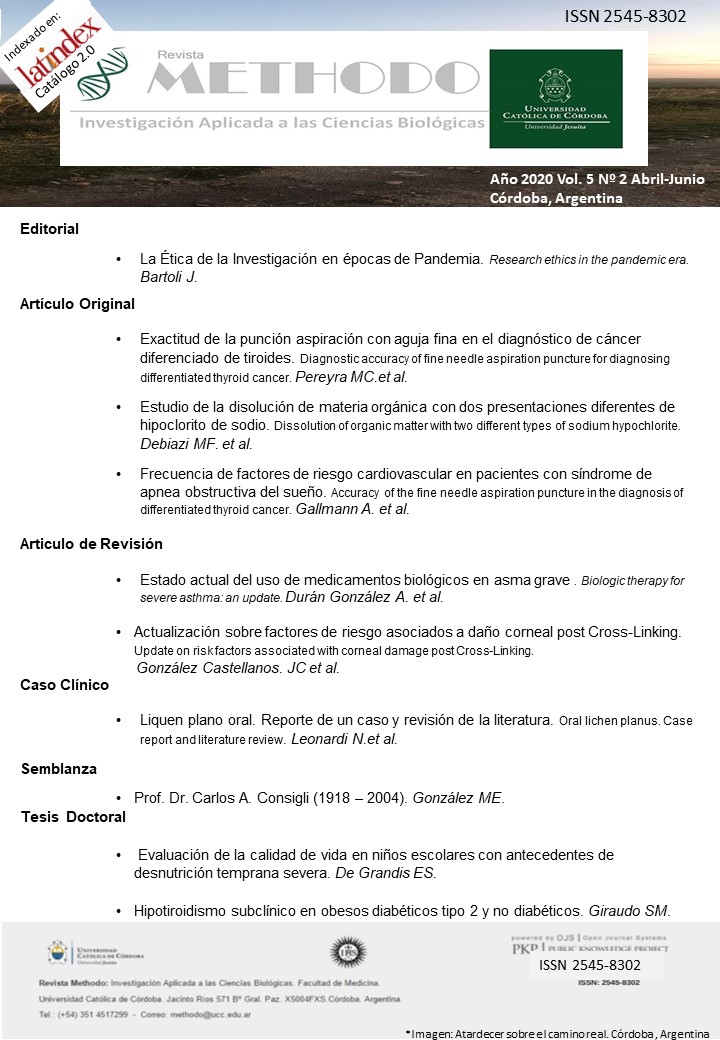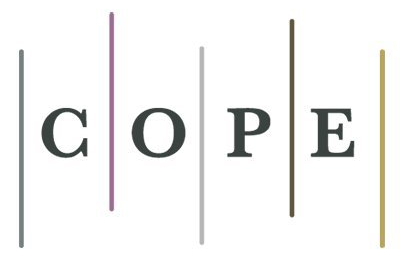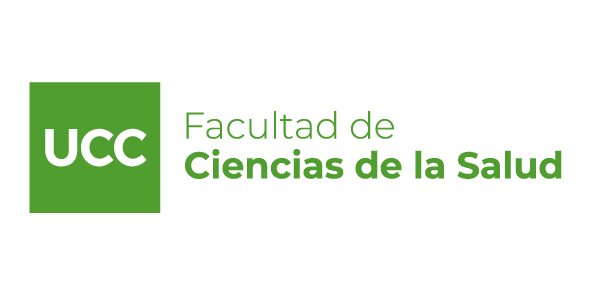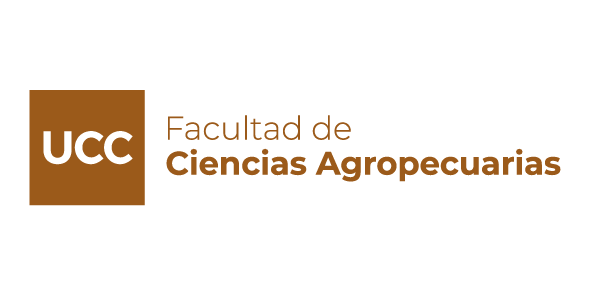Update on risk factors associated with corneal damage post Cross-Linking
DOI:
https://doi.org/10.22529/me.2020.5(2)06Keywords:
corneal Cross-Linking, photodynamic therapy, riboflavin, adverse reactions, corneal melting.Abstract
Corneal Cross-Linking is a procedure used in ophthalmology mainly for the treatment of keratoconus, the
most frequent corneal ectasia. Despite its low complication rate, it is not an exempt technique. Among the
main complications are haze and corneal melting, both have a pathophysiology that is not fully clarified.
A bibliographic review of the association between the use of quinolones and corneal damage versus UV
light exposure was performed. Inherent patient factors that have been related to increased complications
were also raised.
It was determined that UV radiation causes damage to these tissues, sometimes prior to quinolone treatment,
with the correction of the anamnesis being of utmost importance to select the candidates for the procedure.
Published
Versions
- 2020-07-04 (2)
- 2020-04-24 (1)
How to Cite
Issue
Section
License
Copyright (c) 2020 Revista Methodo

This work is licensed under a Creative Commons Attribution-NonCommercial-ShareAlike 4.0 International License.




















